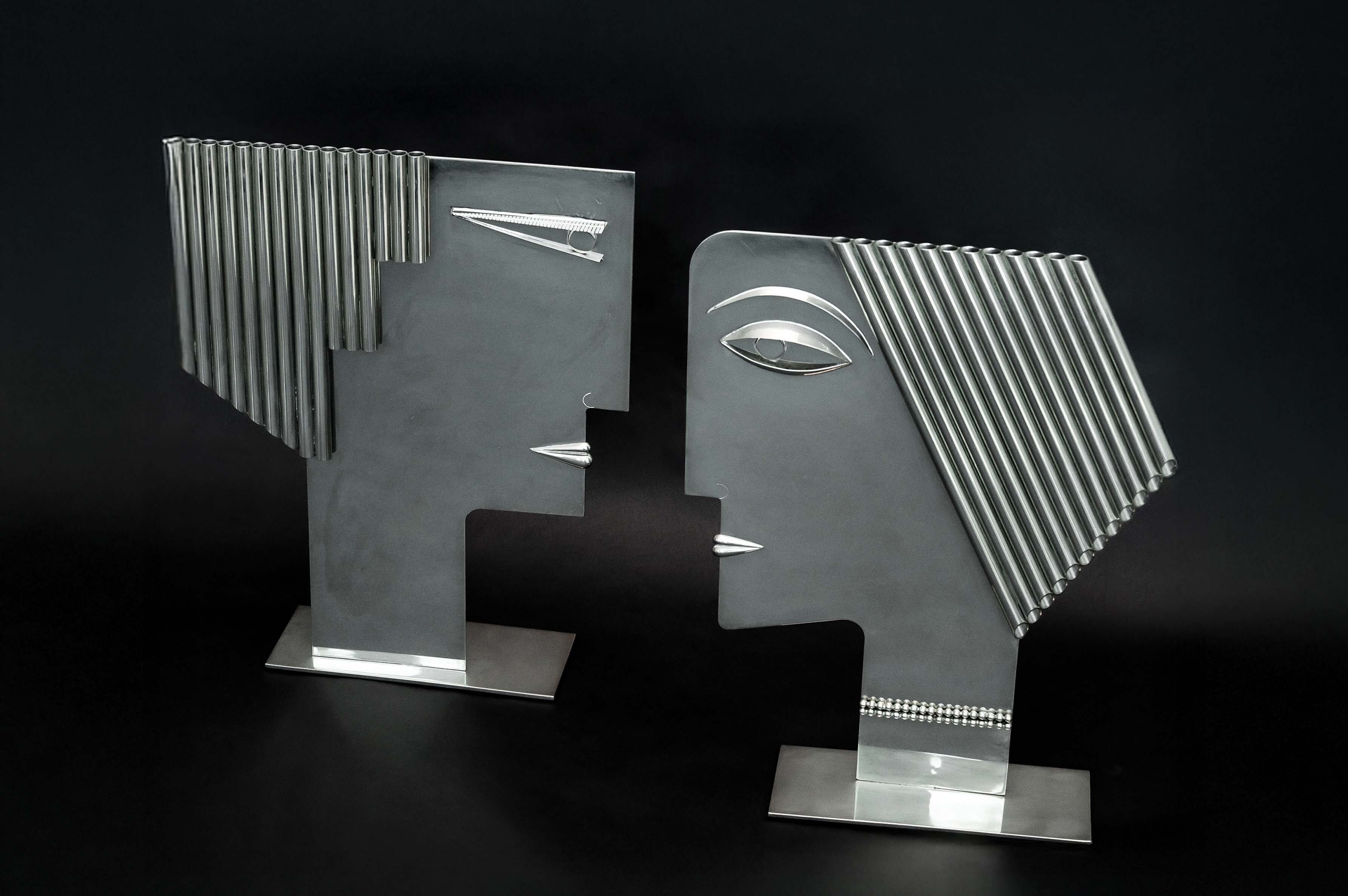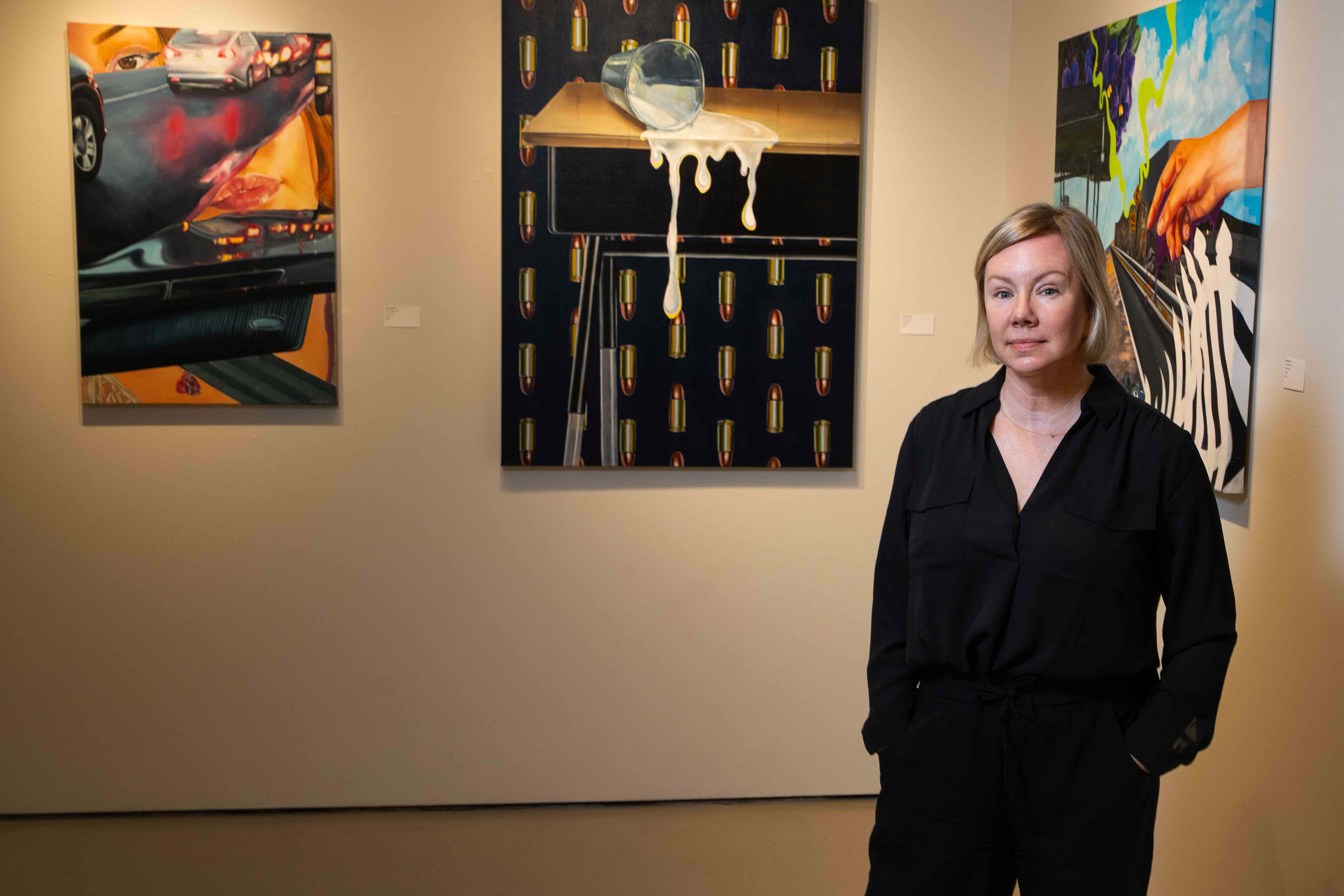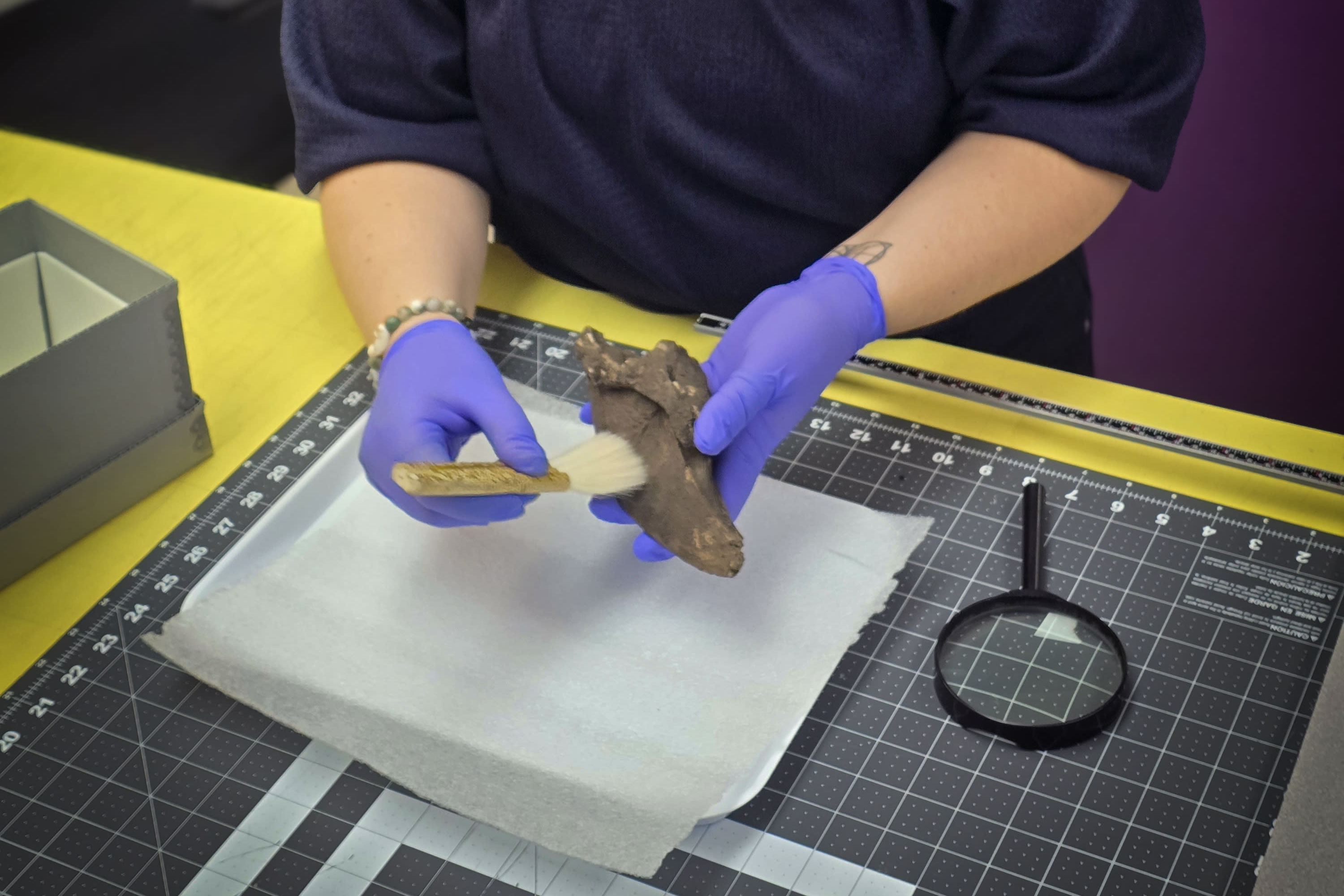A New Commission at Sarasota Art Museum Explores Our Shared Aesthetics

Image: John Polak
Walk into Sarasota Art Museum right now and you'll see a giant new commission: Amalgam, a "plate painting"—that is, a large-scale ceramic installation—by American ceramic artist Molly Hatch.
Hatch’s work has been exhibited internationally, with permanent installations in many museums, and in commissions for brands like Tiffany & Co. She's also created commercial work through collaborations with retailers like Anthropologie. For nearly 20 years, her art has focused on merging the distinctive look of painted surfaces with the physicality of ceramics. Drawing on the history of decorative arts and her rigorous practice as a painter, her work examines the meaning of inherited objects in our lives by defamiliarizing traditional patterns and motifs and scaling traditional designs into large pieces that venture into abstraction.

Image: John Polak
Amalgam was commissioned by Sarasota Art Museum specifically for the museum’s Jan Schmidt Loggia and Mark & Irene Kauffman Arcade. It spans two floors, consists of more than 480 earthenware plates hand-painted in white, blue, and gold luster, and is framed by the four arched windows. With Amalgam, Hatch also plays with empty spaces, so that viewers perceive lines and patterns between plates adjacent to each other. The whole composition can be experienced from multiple points of view inside and outside of the museum.
The patterns and motifs in Amalgam are drawn from historical ceramics, such as 15th-century Chinese Ming-dynasty Hanap drinking vessels, 19th-century Moroccan Fassi ware, 17th- and 18th-century Dutch Delft vases, 18th-century Mexican Talavera tile panels, and 19th- and 20th-century Japanese-inspired English ceramics designed by Christopher Dresser. The installation speaks to both centuries-old global trade networks and the shared aesthetics—in this case, the ceramics' blue-and-white motifs—that connect us.

Image: John Polak
Additionally, Hatch says, she's come to realize that much her art comes from a feminist angle. By working with materials like ceramics, which have often been referred to as “women’s work,” she seeks to reclaim a place for the medium and for women in the art history canon.
“I think I have always sought to find a place for myself as a woman in the story of art, and my work has become a way of doing so,” Hatch says.
Amalgam by Molly Hatch is on view at Sarasota Museum of Art through April 26, 2026. For more information, click here.



